The text below is an excerpt reproduced with permission from Where Stones Speak by Rana Safvi, published by HarperCollins India
Rana Safvi was a speaker at Sarmaya Talks last year—watch her lecture on The Forgotten Cities of Delhi
All images below © Sarmaya Arts Foundation
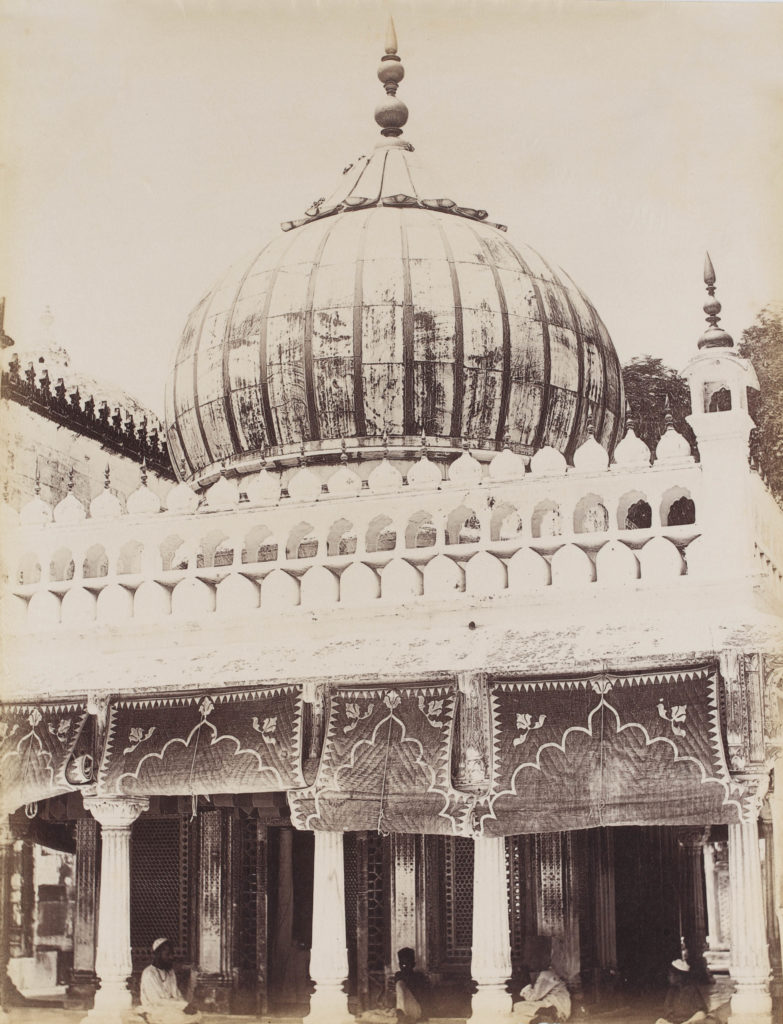
Dargah of Nizamuddin Auliya
Ghalib had this to say about his beloved city Delhi:
Dilli ki hasti munasir kayi hangamon par hai:
Qila, Chandni Chauk, har roz majma Jama Masjid, har hafte
sair Jamuna ke pul ki,
Aur Dilli men har saal melaa phool vaalon kaa—ye paanch
baaten ab nahiin, phir Dillii kahaan.
The existence of Delhi is dependent on many tumultuous events:
The fort, Chandni Chowk, the daily crowds at Jama Masjid, the
weekly jaunt of the Jamuna bridge,
The annual fair at the Phool Walo’n ki Sair—now these five
things are not there, then Delhi isn’t Delhi.
Nothing epitomizes the multicultural flavour of Delhi as the Phool Walo’n Ki Sair or Sair e Gul Farosha’n, the procession of flower sellers that was held on the 15th of the month of Bhaado’n (the sixth month of the Hindu calendar) which coincides with August or September of the currently used Christian calendar. It is currently held in October after the monsoons.
The story of its origin is very interesting. Mirza Jahangir was the heir apparent of the Mughal Emperor Akbar Shah II (1808–1837) even though he was not the eldest son. (The eldest son was Sirajuddin Zafar who later ruled as Bahadur Shah II). He was a young and reckless lad and recognizing the nature of the tenacious grip of the British, he was completely against their growing influence. Naturally, this did not go down well with the ruling Brits who disagreed with his being elevated to the status of the heir. Mirza Jahangir went to the extent of calling the then British Resident, Sir Archibald Seton a lulu in the open court. Since lulu in Arabic means a pearl, the courtiers were able to pacify Seton by saying that it was actually a compliment. But a few days later, the nineteen-year-old prince added insult to injury by firing at the Resident who was returning after an audience with the king, from the roof of the Naubat Khana in the fort. Sir Archibald escaped but his orderly was killed. This resulted in the young prince being exiled to Allahabad. His distraught mother Mumtaz Mahal Begum made a vow that if her son returned to their fold she would offer a phoolon ki chadar, a floral sheet, at the dargah of Hazrat Bakhtiyar Kaki or Qutub Sahab. Her prayers worked and miraculously, the young prince was restored to the family after a few years. There is a lot of folklore attached to his release because of this pledge.
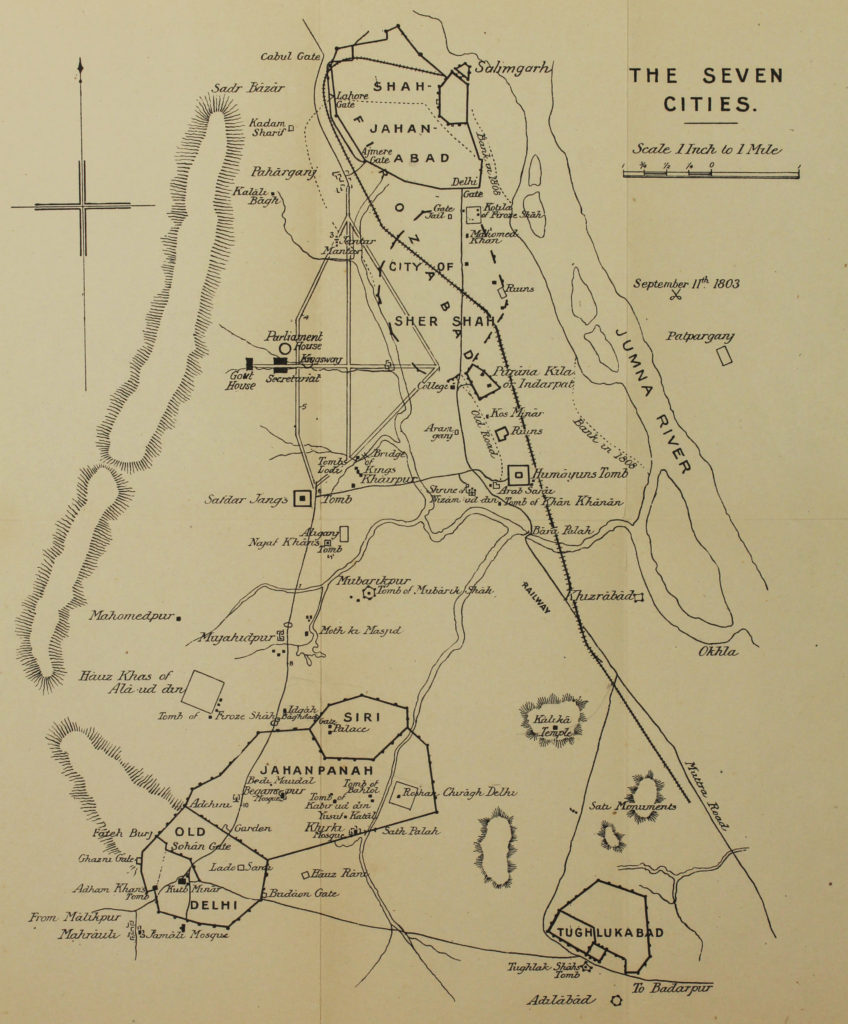
The 7 Cities of Delhi
The empress then made true her vow and the entire court shifted to Mehrauli for seven days of merry-making and celebrations. Hindus and Muslims alike joined in the festivities. Since the empress had also pledged to walk barefeet, flower petals were scattered on the path to make it easy for her. It was such a wonderful experience for the people of Delhi that on public demand, the emperor decided it would henceforth be an annual affair to be held on the 15th of Bhaado’n every year. Akbar Shah II also offered a pankha, a fan made of flowers at the nearby temple of Yogmaya. Traditionally, if the Mughal emperors were unable to offer the pankhas at Yogmaya Temple they did not offer it at the dargah of Qutub Sahab the next day. In the first such procession of flower sellers, the heir apparent Sirajuddin Zafar offered the pankhas with a poem. I quote some of the verses below:
Nur e altaaf o karam ki hai yeh sab iss ke jhalak
Ke woh zahir hai malik aur hai batin mein malak
Yeh bana iss Shah e Akbar ki badaulat pankha
Aaj rangeen hai raiyyat se laga Shah talak
Zafranzaar hai ek baam se dargah talak
Dekhne aayi hai iss rang se khilqat pankha
All this reveals the radiance of his blessing
Within he is an Angel and without a King
To that great King Akbar do we owe this coloured fan
From prince to pauper, all bedecked to the last man
From the bower to the dargah, a wondrous saffron hue
A blessed Pankha all creation has come here to view
Till the Mughals ruled India, this festival was celebrated with great pomp and show. The royal family would leave the Red Fort in a majestic procession going via Purana Qila (Old Fort), Humayun’s tomb, dargah of Sheikh Nizamuddin Auliya and they would stop at the madarsa in the Safdarjung Tomb Complex. Here they would rest awhile and then leave for Mehrauli, reaching there by evening. The princes and princesses would dress up in their finest and pay their respects to Qutub Sahab and then go on to Jahaz Mahal, Hauz e Shamsi, Auliya Masjid and stop to enjoy the weather at the jharna, the waterfall where swings would be put up for them.
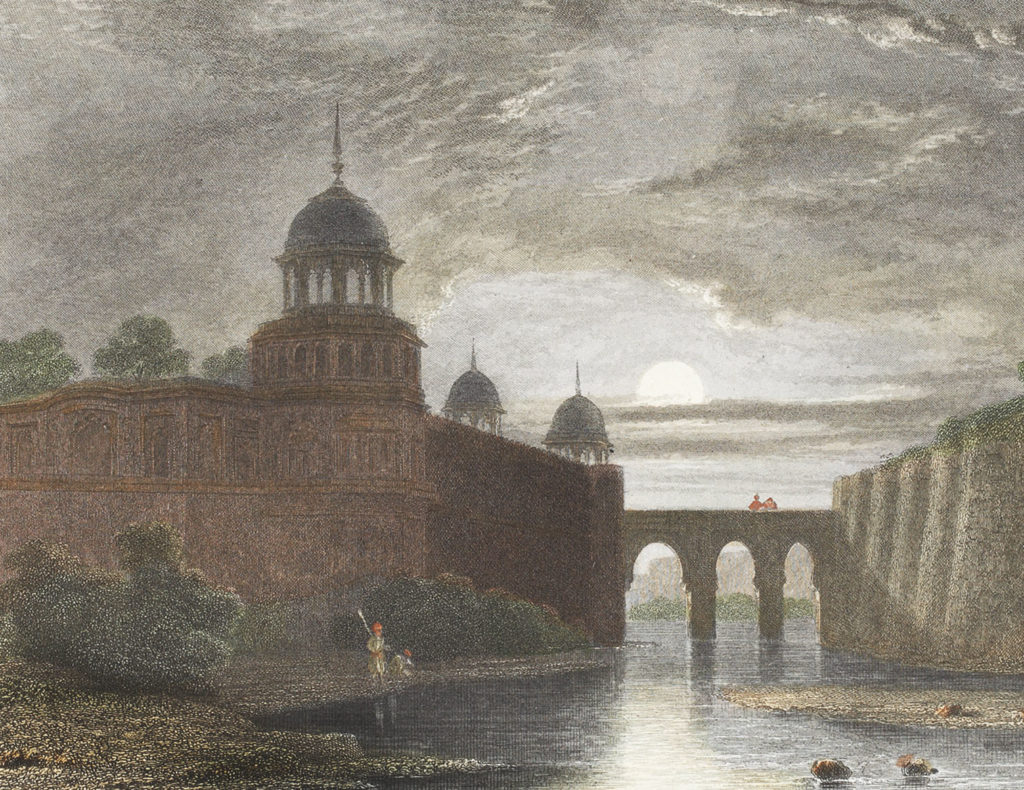
An engraving of Red Fort, Delhi
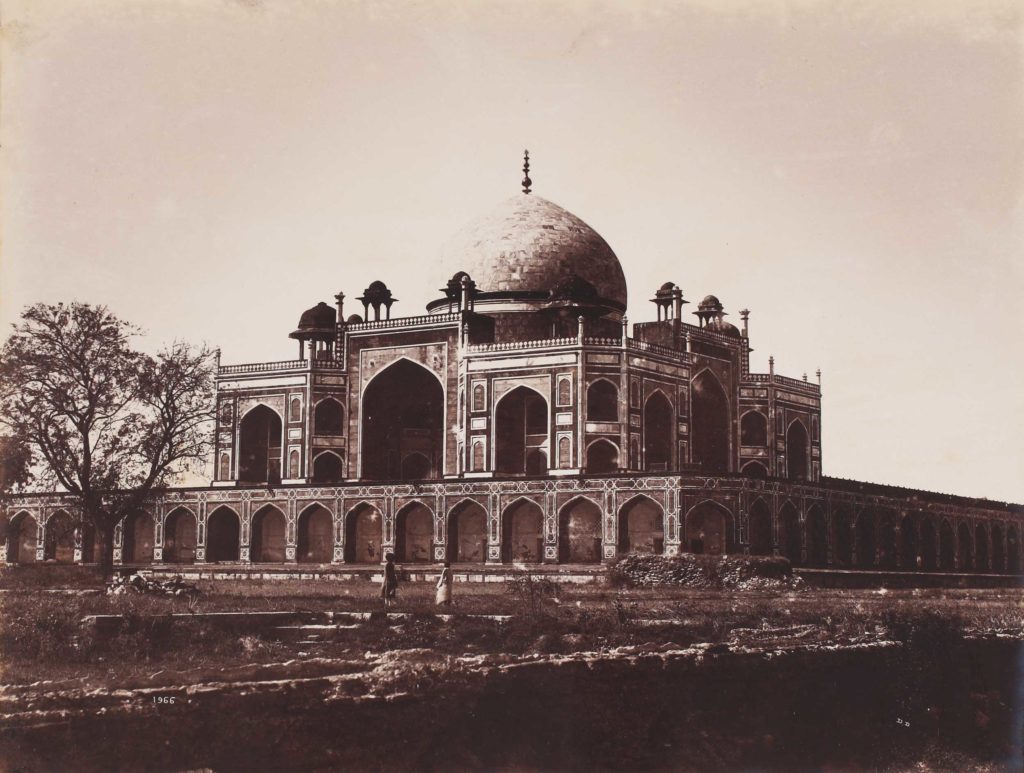
Humayun’s Tomb
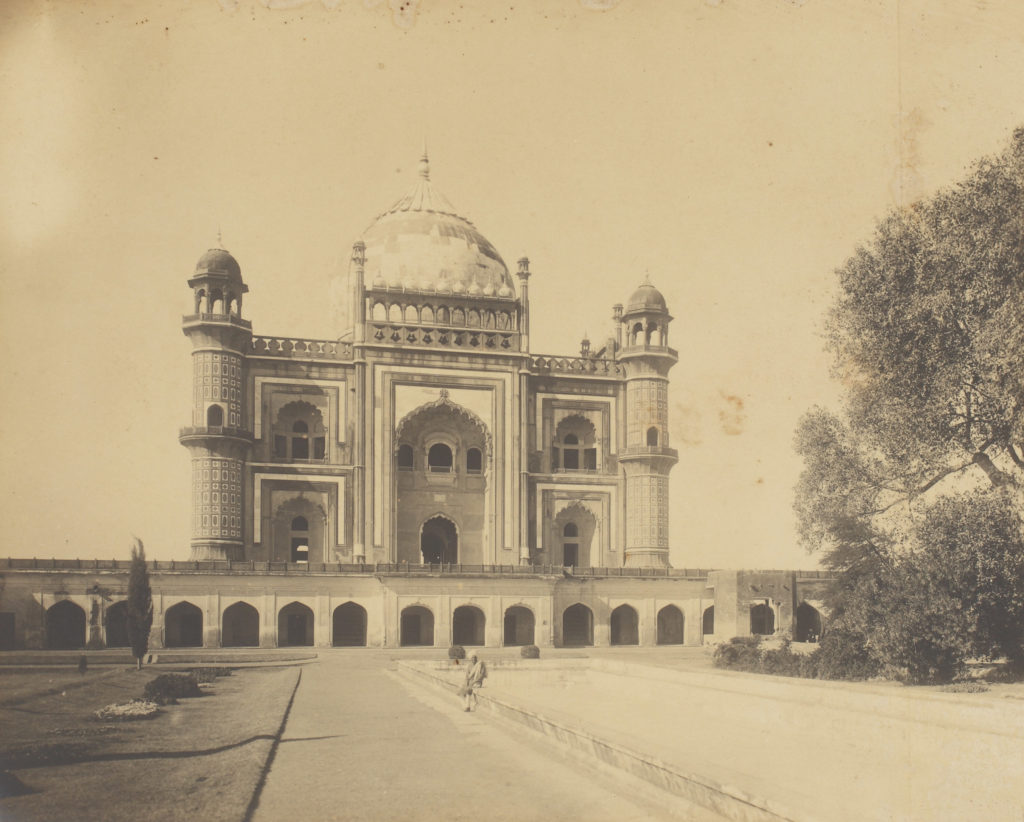
Mausoleum of Safdarjung
The first pankhas would be offered at the Yogmaya Temple on the eve of 15th of month of Bhaado’n during the Mughal rule and the next day there would be a procession to offer pankhas at the dargah of Qutub Sahab. The emperor, empress, princes and princesses would carry the flowers, perfumes, sweets in colourfully decorated baskets, on their heads. (Nowadays, every year, the two pankhas are offered by the President of India to the Yogmaya Temple and the dargah of Qutub Sahab.)
This tradition continued till 1857 with the Mughal kings using Zafar Mahal and Jahaz Mahal for their festivities. The Hauz e Shamsi is also cleaned up for this event. After 1857, the British ensured continued celebrations around this festival every year although in 1942, during the Quit India movement, they stopped this festival. Prime Minister Jawaharlal Nehru restarted it in 1962 and till date it is held annually after the monsoons with much pomp and show. The President of India and the Lt Governor of Delhi are ceremoniously invited with the shehnai being played at their residence. A mela, a fair is organized in Mehrauli with amusement rides, crafts and artisans selling their ware. The pankhas are taken in a grand procession from Hauz e Shamsi and offered at the Dargah of Qutub Sahab on Thursday and at the Yogmaya Temple on Friday. The first pankhas offered are that of the President of India and the Lt Governor of Delhi. Cultural troupes from the participating states also take out a ceremonial procession with their offering of a pankha through the streets of Mehrauli to the dargah and the Temple.
Waqai sair hai yeh dekhne hi ke qaabil
Chashm e anjum ho na iss sair par kyun maai’ l
To look at this ceremony is such a delight
Why wouldn’t the stars gaze at this very ceremony
—Bahadur Shah Zafar
(on the occasion of first Phool Walo’n ki Sair)



